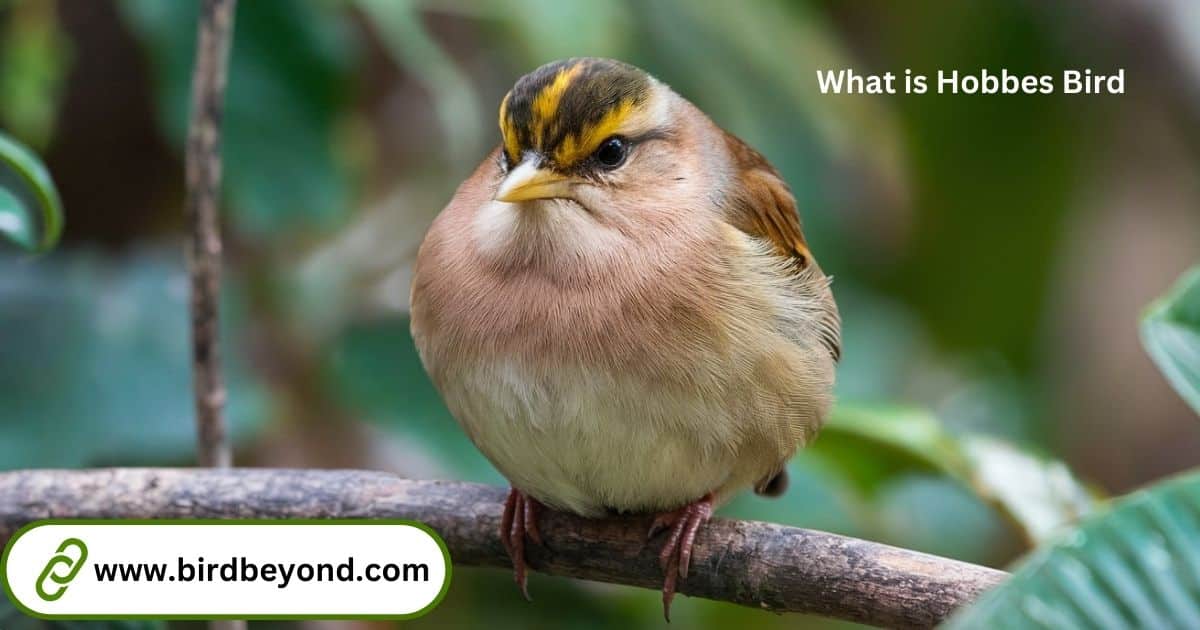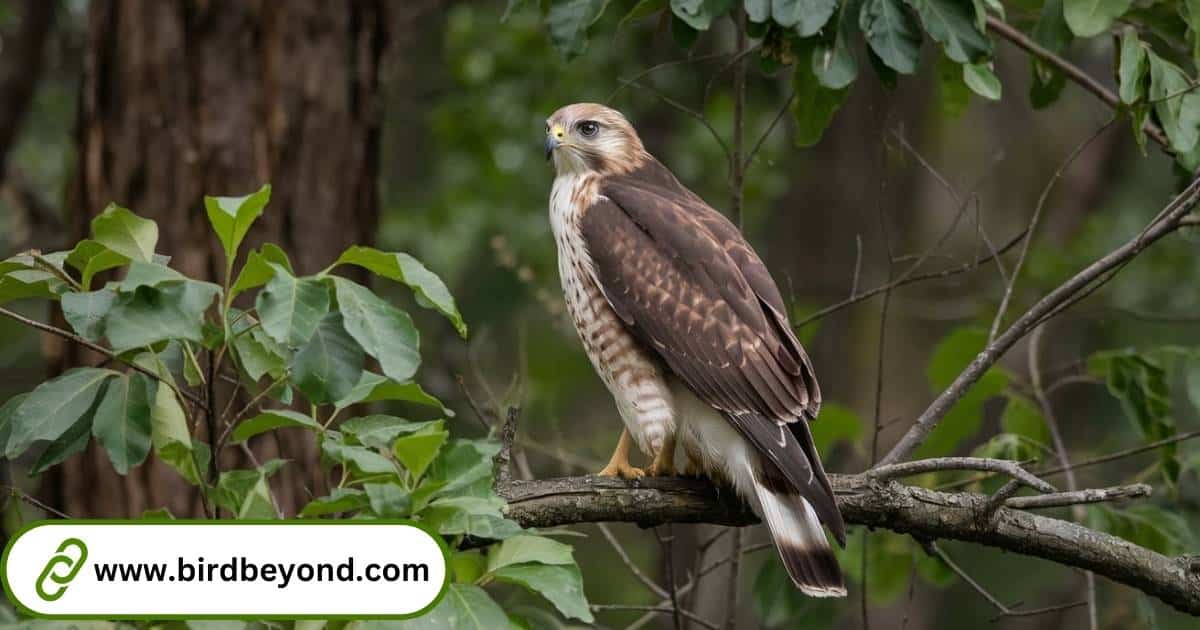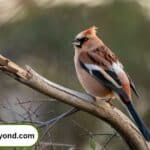When you think of penguins, you probably picture adorable, waddling birds in tuxedo-like plumage. But beneath that charming exterior lies a shocking secret that’s been causing quite a stir on the internet. Why do penguin mouths terrify everyone who looks? Let’s dive into the depths of this avian nightmare and uncover the fascinating truth behind these seemingly innocent creatures.
I. The Shocking Truth Behind Penguin Mouths

A. The unexpected horror lurking in these adorable birds
You’re scrolling through your social media feed, admiring cute animal photos, when suddenly you come across an image that makes you recoil in horror. It’s the inside of a penguin’s mouth, and it looks like something straight out of a sci-fi horror film. But why does this seemingly harmless bird sport such a terrifying oral cavity?
The answer lies in evolution and the unique adaptations penguins have developed to thrive in their harsh marine environments. While their external appearance may be charming, the inside of a penguin’s mouth tells a different story – one of survival and efficient feeding mechanisms.
B. Why penguin mouths have become an internet sensation
In recent years, images and videos of penguin mouths have gone viral, sparking a mix of fascination and fear among viewers. The stark contrast between the birds’ cute exterior and their nightmare-inducing mouths has captured the internet’s attention, leading to countless memes, discussions, and even scientific inquiries.
This phenomenon has not only entertained millions but also educated people about the surprising adaptations found in nature. As we delve deeper into the world of penguin mouths, we’ll uncover the reasons behind their terrifying appearance and the crucial role these features play in the birds’ survival.
II. Diving into the Abyss: Inside a Penguin’s Mouth
A. The startling first impression
When you first glimpse the inside of a penguin’s mouth, you’re likely to be taken aback by what you see. Instead of the smooth, pink interior you might expect, you’re confronted with a sight that’s more reminiscent of a creature from the deep sea.
The most striking features are the numerous spine-like structures that line the tongue and palate. These backwards-facing projections give the mouth a menacing appearance, almost like rows of sharp teeth. But there’s more to this unusual oral anatomy than meets the eye.
B. Breaking down the anatomy
To truly understand why penguin mouths are so terrifying, we need to examine their unique anatomical features in detail.
1. The fearsome spines: purpose and function
The spine-like structures that dominate a penguin’s mouth are called papillae. These are not teeth, despite their appearance. Instead, they’re made of keratin, the same protein that forms human fingernails and hair.
The papillae serve several crucial functions:
- Gripping prey: The backwards-facing spines help penguins hold onto slippery fish as they swallow them whole.
- Filtering water: As penguins expel water from their mouths after catching prey, the papillae act as a sieve, retaining the food while allowing water to escape.
- Protection: The tough, spiny surface helps protect the penguin’s mouth from injury when catching and eating prey with sharp fins or scales.
Here’s a breakdown of papillae characteristics in different penguin species:
| Species | Papillae Length | Density | Primary Diet |
|---|---|---|---|
| Emperor | 1-2 cm | High | Fish, squid |
| Gentoo | 0.5-1 cm | Medium | Krill, small fish |
| Little | 0.2-0.5 cm | Low | Small fish, squid |
2. Tongue structure and its role
The penguin’s tongue is another feature that contributes to the mouth’s intimidating appearance. It’s generally thick and muscular, with a rough, textured surface. This design allows the tongue to work in conjunction with the papillae to manipulate and swallow prey efficiently.
Key features of a penguin’s tongue include:
- Backwards-facing barbs
- Strong muscles for precise movement
- Limited taste buds compared to other Why Penguin Mouths Terrify Everyone Who Looks
3. The absence of teeth and its significance
One of the most surprising aspects of penguin mouth anatomy is the complete lack of teeth. Unlike many predatory animals, penguins have evolved to swallow their prey whole, eliminating the need for chewing.
This toothless design offers several advantages:
- Reduced weight, which is crucial for efficient swimming and diving
- Simplified feeding process, allowing for quick consumption of multiple prey items
- Lower energy expenditure on maintaining and replacing teeth
III. Evolution’s Cruel Joke: Why Penguins Developed Such Terrifying Mouths

A. Adapting to an aquatic diet
The terrifying appearance of penguin mouths is a result of millions of years of evolution, fine-tuning these birds for life in the water. As penguins transitioned from flying Why Penguin Mouths Terrify Everyone Who Looks? to expert swimmers, their bodies underwent numerous changes, including significant modifications to their mouths and beaks.
Key evolutionary adaptations:
- Streamlined body shape
- Flipper-like wings
- Dense, waterproof feathers
- Specialized mouth structures for aquatic feeding
These adaptations allowed penguins to become highly efficient marine predators, capable of catching and consuming slippery prey in challenging underwater environments.
B. The physics of swallowing slippery fish
One of the primary challenges penguins face is how to catch and swallow slippery fish while swimming underwater. This is where their terrifying mouth structures come into play.
The backwards-facing papillae act like a one-way valve, allowing prey to slide easily towards the throat while preventing it from escaping. This mechanism is crucial for penguins, as they often catch multiple fish in a single diving session and need to secure their prey quickly and efficiently.
Consider this scenario:
A Gentoo penguin spots a school of small fish while diving. It darts through the water, catching several fish in rapid succession. As it closes its beak, the papillae in its mouth grip onto the slippery fish, preventing them from escaping. The penguin then tilts its head back, using gravity and the barbed tongue to guide the fish down its throat.
This efficient feeding method allows penguins to maximize their energy intake during short diving periods, which is essential for survival in the cold, demanding Antarctic environment.
C. Defense mechanisms against regurgitation
Another crucial function of the penguin’s intimidating mouth structures is to prevent regurgitation. When diving and swimming at high speeds, penguins are subject to significant water pressure. Without proper adaptations, this pressure could force swallowed prey back up the esophagus.
The papillae and specialized tongue work together to create a series of one-way valves, ensuring that food moves in only one direction – towards the stomach. This adaptation is particularly important for penguin parents, who need to retain food in their stomachs to regurgitate for their chicks later.
IV. Diversity in Terror: Variations Among Penguin Species

A. Size matters: How mouth structure differs by penguin size
While all penguin species share the basic terrifying mouth structure, there are notable variations among different species, often correlating with their size and specific feeding habits.
Comparison of mouth structures in different penguin species:
- Emperor Penguins (largest species):
- Longer, more pronounced papillae
- Wider mouth opening for larger prey items
- Stronger jaw muscles for handling bigger fish and squid
- Little Penguins (smallest species):
- Smaller, less dense papillae
- Narrower beak and mouth opening
- Adapted for catching smaller prey like anchovies and sardines
- Galapagos Penguins (tropical species):
- Shorter, less pronounced papillae
- More flexible beak for varied diet
- Adaptations for filtering out salt water
B. Dietary influences on mouth anatomy
The specific diet of each penguin species has a significant impact on their mouth structure. Species that primarily feed on fish tend to have more pronounced, denser papillae, while those that consume more krill or smaller prey items may have less intimidating mouth structures.
For example:
- Chinstrap Penguins, which primarily feed on krill, have finer, more closely spaced papillae that help them filter these tiny crustaceans from the water.
- King Penguins, which hunt larger fish and squid, have longer, more robust papillae to secure their slippery prey.
C. Notable species with unique mouth features
Some penguin species have developed particularly interesting mouth adaptations:
- Gentoo Penguins: Known for their versatile diet, Gentoo penguins have a unique mouth structure that allows them to switch between fish and krill depending on availability. Their papillae are of medium length and density, providing a balance between gripping larger prey and filtering smaller items.
- Yellow-eyed Penguins: These rare penguins have unusually long, slender beaks with specialized papillae adapted for probing rocky crevices in search of their preferred prey, such as opal fish and blue cod.
- Fiordland Penguins: Native to New Zealand, these penguins have developed a mouth structure adapted for catching prey in the challenging environment of coastal fiords. Their papillae are particularly sharp and dense, allowing them to grip onto fish in strong currents.
V. The Bite Behind the Fright: Penguin Jaw Strength and Behavior

A. Can penguins bite humans? Real-life incidents
Despite their terrifying mouth structures, penguins are generally not aggressive towards humans. However, they are wild animals and may defend themselves if they feel threatened. There have been occasional reports of penguin bites, usually occurring when humans get too close or attempt to handle the Why Penguin Mouths Terrify Everyone Who Looks.
Case study: Tourist bitten at Boulders Beach, South Africa
In 2018, a tourist at the popular Boulders Beach penguin colony in Cape Town was bitten by an African penguin after approaching too closely for a photo. The incident resulted in a minor injury but served as a reminder of the importance of respecting wildlife and maintaining a safe distance.
While penguin bites are rarely severe, their sharp beaks can cause painful cuts or bruises. It’s crucial to remember that these are wild animals and should be observed from a respectful distance.
B. Comparing penguin bite force to other animals
Although penguins have intimidating mouths, their bite force is relatively modest compared to many other animals. This is because their jaws are adapted for gripping slippery prey rather than crushing or tearing.
Here’s a comparison of bite forces (in Newtons) among various animals:
| Animal | Bite Force (N) |
|---|---|
| Penguin (average) | 50-100 |
| Human | 700-1000 |
| Domestic Dog | 150-350 |
| Great White Shark | 18,000 |
| Saltwater Crocodile | 35,000 |
As we can see, while a penguin’s bite might be surprising or uncomfortable, it’s far from the most powerful in the animal kingdom.
C. Defensive and aggressive behaviors involving their mouths
While penguins primarily use their mouths for feeding, they also employ them in various defensive and social behaviors:
- Territorial defense: During breeding season, penguins may use their beaks to peck at intruders or rival penguins who venture too close to their nests.
- Courtship rituals: Some penguin species engage in beak-fencing as part of their courtship displays, gently tapping their beaks together.
- Preening: Penguins use their beaks to clean and arrange their feathers, maintaining their crucial waterproof coating.
- Regurgitation for chicks: Adult penguins use their mouths to store and regurgitate partially digested food for their chicks.
VI. Beyond the Spines: Lesser-Known Facts About Penguin Mouths
A. The mystery of taste: Do penguins have taste buds?
One of the most intriguing aspects of penguin mouths is their sense of taste. Unlike many other Why Penguin Mouths Terrify Everyone Who Looks, penguins have a relatively limited number of taste buds. Research suggests that they may only be able to distinguish between salty and sour flavors.
Key points about penguin taste:
- Penguins have fewer than 1,000 taste buds (humans have around 10,000)
- Their taste buds are located at the back of the tongue and throat
- The limited sense of taste may be an adaptation to their marine diet and the cold temperatures of their habitat
This reduced sense of taste doesn’t hinder penguins, as their diet consists primarily of fish, squid, and krill, which they swallow whole. The emphasis is on catching and swallowing prey efficiently rather than savoring flavors.
B. Gag reflex: A crucial survival mechanism
Contrary to what their terrifying mouth structures might suggest, penguins do have a gag reflex. This reflex is an important survival mechanism that helps prevent choking and allows penguins to regurgitate food for their chicks.
The gag reflex in penguins serves several purposes:
- Protecting the airway during swallowing
- Facilitating the regurgitation of food for chicks
- Expelling any accidentally ingested inedible items
Interestingly, the papillae in a penguin’s mouth are arranged in a way that allows food to move easily towards the throat but makes it more difficult for items to come back up. This one-way system helps penguins retain their catch while swimming and diving.
C. Mouth care in the wild: How penguins maintain oral hygiene
Given the intense use of their mouths for feeding and other activities, you might wonder how penguins maintain oral hygiene in the wild. While they don’t brush their teeth like humans, penguins have several natural mechanisms for keeping their mouths clean and healthy:
- Saltwater rinse: The seawater that penguins swim in and often ingest acts as a natural mouthwash, helping to remove food particles and bacteria.
- Preening: When penguins preen their feathers, they also clean their beaks, helping to remove any stuck food or debris.
- Abrasive diet: The hard parts of their prey, such as fish bones and squid beaks, may help scrape away any build-up in their mouths.
- Rapid digestion: Penguins have a fast metabolism and quickly process their food, reducing the time for bacteria to grow in their mouths.
Despite these natural cleaning mechanisms, penguins in captivity may receive additional oral care from their caretakers to ensure optimal health.
VII. From Nightmare to Necessity: The Ecological Importance of Penguin Mouths
A. Role in the marine food chain
While penguin mouths may look terrifying, they play a crucial role in marine ecosystems. As mid-level predators, penguins help maintain the balance of various marine populations.
Penguin feeding impact on marine ecosystems:
- Population control: By feeding on fish, squid, and krill, penguins help regulate the populations of these species, preventing any one group from becoming overly dominant.
- Nutrient cycling: Through their feeding and excretion, penguins help distribute nutrients throughout the marine environment, supporting the growth of plankton and other microorganisms.
- Indicator species: Changes in penguin feeding habits or success can signal broader shifts in the marine ecosystem, making them valuable indicators of ocean health.
B. Indicators of ocean health
The unique adaptations of penguin mouths make these Why Penguin Mouths Terrify Everyone Who Looks excellent indicators of ocean health. By studying penguin feeding habits and success rates, scientists can gain insights into the overall state of marine ecosystems.
How penguin mouths inform us about ocean health:
- Prey availability: Changes in the types or sizes of prey found in penguin stomachs can indicate shifts in fish populations or ocean temperatures.
- Pollution impact: The presence of microplastics or other pollutants in penguin mouths or stomachs can reveal the extent of marine pollution in their feeding areas.
- Climate change effects: Alterations in penguin feeding patterns or success rates may signal climate-related changes in ocean currents or prey distribution.
C. Adaptations in the face of climate change
As our planet’s climate continues to change, penguins and their specialized mouths are facing new challenges. Some species are showing remarkable adaptability:
- Diet flexibility: Some penguin species are adapting to changes in prey availability by altering their diets. For example, Gentoo penguins have been observed switching from krill to more abundant fish species in some areas.
- Range shifts: As ocean temperatures change, some penguin species are expanding or shifting their ranges, potentially exposing them to new prey types that may require slight adaptations in their feeding mechanisms.
- Breeding timing adjustments: Some penguins are altering their breeding schedules to better align with shifts in prey availability, which can affect how and when they use their specialized mouth structures for feeding chicks.
While these adaptations show the resilience of penguins, the rapid pace of climate change remains a significant threat to many species, highlighting the importance of conservation efforts.
FAQs
Do penguins have teeth hidden beneath the spines?
No, penguins don’t have any teeth. The spine-like structures in their mouths, called papillae, are made of keratin – the same protein that forms our fingernails and hair. These papillae help penguins grip and swallow their slippery prey.
Can penguins stick out their tongues?
Penguins can move their tongues, but they don’t stick them out in the same way many other animals do. Their tongues are thick and muscular, designed to work with the papillae to manipulate food towards their throat. You’re unlikely to see a penguin sticking its tongue out unless it’s undergoing a veterinary examination.
How do baby penguins feed with such intimidating mouths?
Baby penguins, or chicks, are born with softer, less developed mouth structures. As they grow, their papillae develop and harden. Initially, chicks are fed regurgitated food directly from their parents’ mouths. This semi-digested meal is easier for the chicks to swallow and digest.
Are penguin mouths dangerous to humans?
While penguin mouths look terrifying, they’re not particularly dangerous to humans. Penguins rarely bite unless severely provoked, and their bite force is relatively weak compared to many other animals. However, their sharp beaks can cause painful cuts or bruises, so it’s always best to maintain a respectful distance from wild penguins.
Do penguins use their mouths for communication? Why Penguin Mouths Terrify Everyone Who Looks?
Penguins primarily communicate through vocalizations and body language rather than using their mouths. However, some species engage in beak-fencing as part of courtship rituals, gently tapping their beaks together. They also use their beaks in territorial displays, but this is more about posturing than actual mouth-based communication.
-
Do Birds Eat Squirrels?
Introduction: The Curious Case of Squirrels and Cat Food Do Birds Eat Squirrels encounters in our backyards often spark fascinating questions about animal behavior. One common query that homeowners and pet enthusiasts frequently ask is: do squirrels eat cat food? The short answer is yes, squirrels can and will eat cat food if given the…
-
What is Hobbes Bird? Unraveling a Philosophical Metaphor
This comprehensive exploration unpacks the origins, characteristics, and enduring relevance of the Hobbes Bird in today’s world. By the end, you’ll not only understand what the Hobbes Bird symbolizes but also why its lessons remain vital. The Hobbes Bird is not a creature you’ll find in the wild. Instead, it exists in the realm of…
-
7 Types of Hawks in Michigan: Ultimate ID Guide with Pictures
Hawks represent extraordinary predators that have sculpted intricate ecological relationships across Michigan’s diverse landscapes. Types of Hawks That Live in Michigan showcase remarkable adaptability, survival strategies, and unique characteristics that make them essential components of the state’s complex ecosystems. Michigan’s geographical diversity creates perfect habitats for multiple hawk species, each evolving specialized traits to thrive…

William Henry is a distinguished blogger with a flair for avian storytelling. With a wealth of experience, he delivers captivating insights and expert knowledge to Bird Beyond. William’s passion for birds and his engaging writing style make him a standout voice in the birdwatching community, offering readers both valuable information and delightful narratives.










